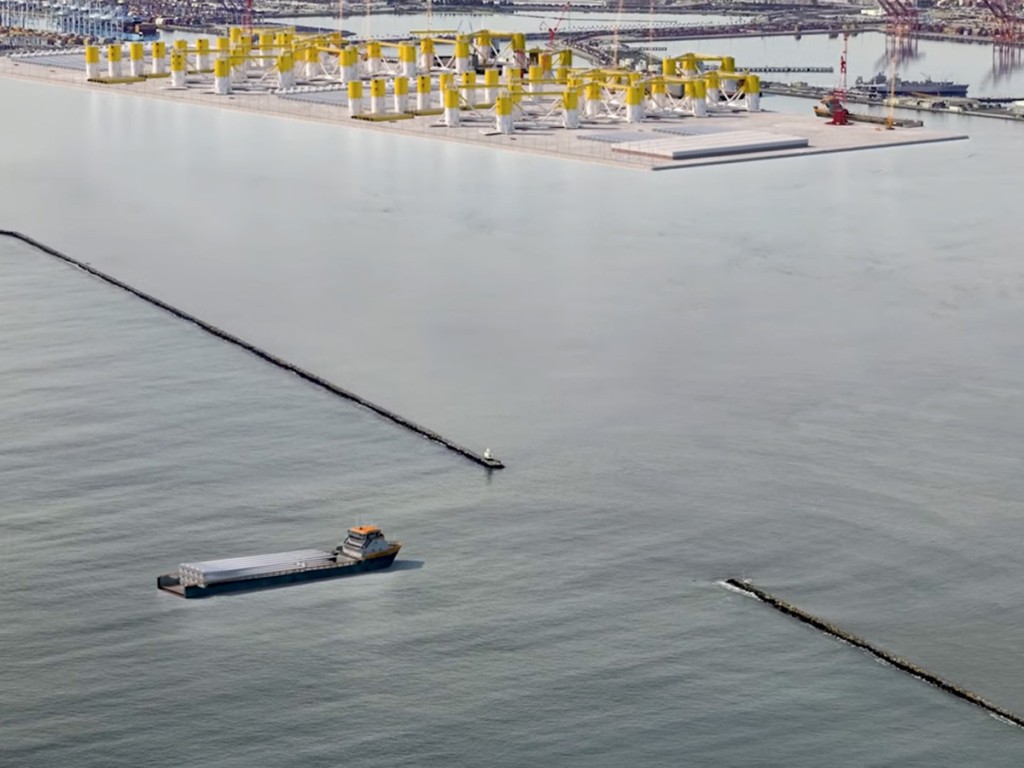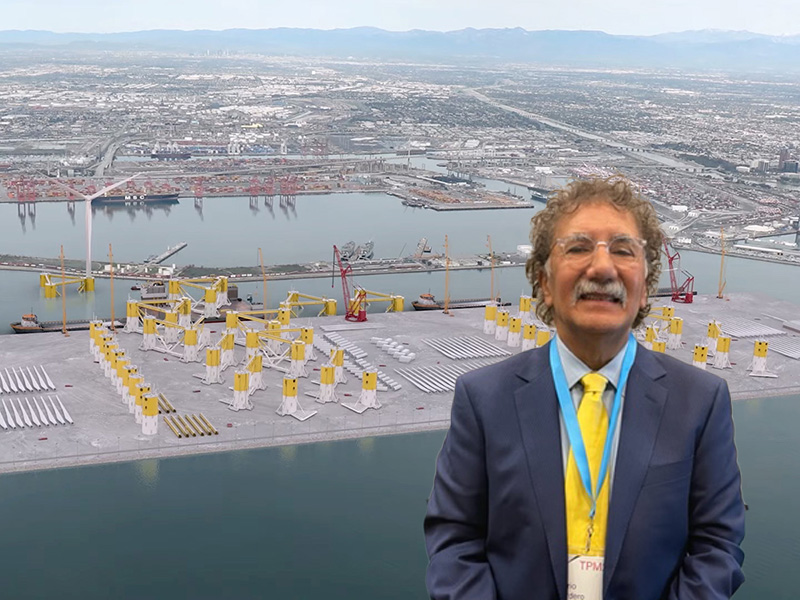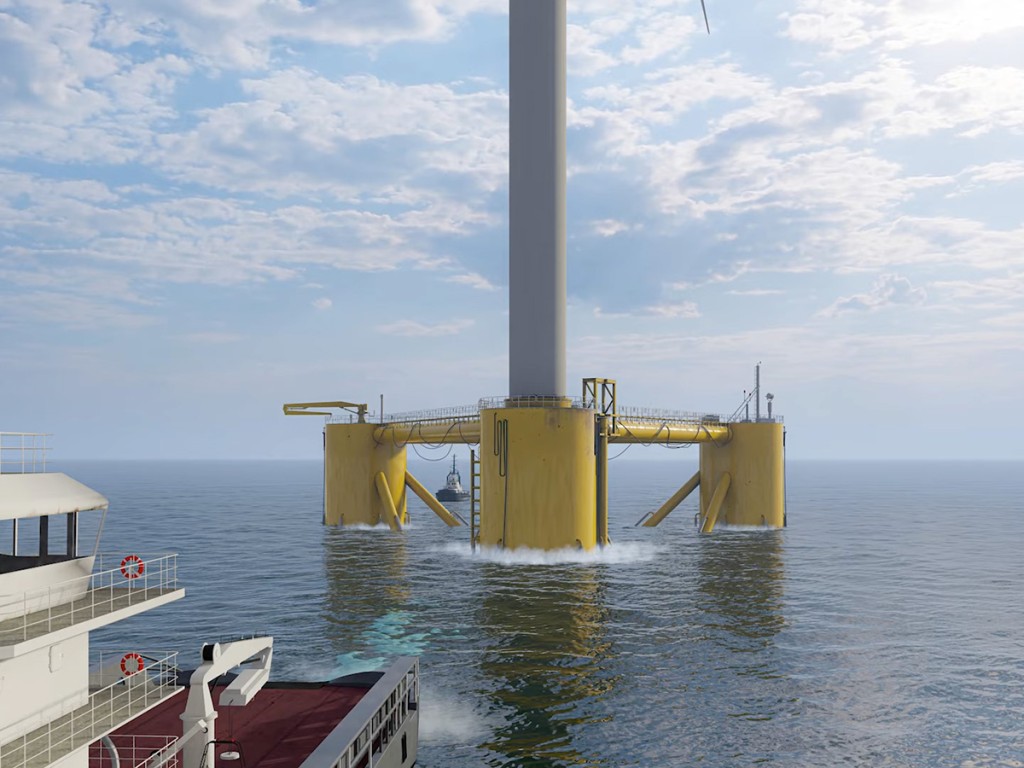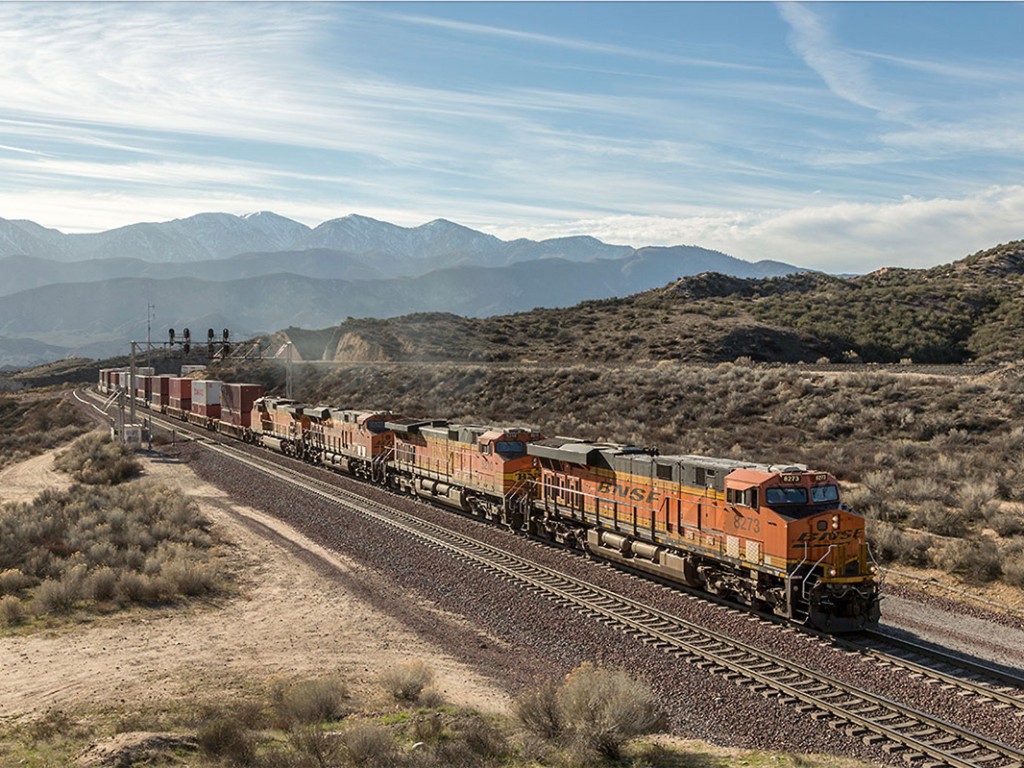
The Port of Long Beach is proposing a 400 acre state-of-the-art wind turbine manufacturing facility producing floating wind turbines for new California wind farms, according to the Port’s Executive Director Mario Cordero.
Cordero said the proposed ‘Pier Wind’ project would take the Port of Long Beach into a new direction as a wind turbine developer: “The Port is taking a leading role here in becoming … a renewable energy developer.”
In an interview with AJOT at the TPM 2023 conference in Long Beach, Cordero explained the concept behind the proposed Pier Wind: “Pier Wind … basically commenced with the quest of the State of California for renewable energy we need to do in terms of the gigawatts that we have to obtain by 2045.”
The Pier Wind project is “in the process of a study regarding a design concept and should be completed by late Spring … That will put us on the road to really assess and identify the milestones as we move forward in the next decade to provide the deep water port facility, which could stage the turbines … and distribute them up and down the coast of California for Humboldt and Morro Bay.”
The Pier Wind project is in line with the Port of Long Beach’s commitment to being a green port: “We like to say at the Port of Long Beach (that) we pride ourselves on being an environmental steward. Pier Wind goes hand in hand with the announced GREENPORT policy status that we announced in 2005.”

Cordero said he believes Pier Wind financing will be available. “The good news about wind energy is there's a lot of private sector lending (based on) a number of inquiries, I think the interest is there. So, this would be a combination of government investment, private sector investment and investment on behalf of the Port of Long Beach,” Cordero noted.
The Port has also received inquiries from construction unions about providing trained workers for the project. Cordero said, “We've already been contacted by folks in the workforce (sector) regarding their interest …. We're not reinventing the wheels … This is new to the West Coast, but it's not new to the East Coast … I think this is something that as a nation, we need to amplify on for both East, West and Gulf coasts with regard to renewable energy …if we're going to have any thought of having real impacts on climate change, in this case, reducing emissions from combustible engines and fossil fuel dependency, then there's only one way … that road leads you to: dependence on renewable energy.”

In a video presentation, the Port of Long Beach provided the following additional details about Pier Wind:
- Pier Wind is the Port’s proposal to develop the largest facility specifically designed to accommodate the manufacture and assembly of offshore wind turbines in the United States.
- The proposed facility would span up to 400 acres of newly built land located Southwest of the Long Beach International Gateway Bridge.
- The proposed terminal includes heavy lift wharves supporting large cranes to receive and handle large offshore wind components and construct the world's largest floating offshore wind turbine systems. As a deep-water port, the Port of Long Beach is capable of accommodating vessels carrying the heavy and large-scale components required to assemble the offshore wind turbines.
- The facility would not impact other Port operations.
- With its skilled and diversified local workforce, the Port offers the ideal location for Pier Wind, which would generate new jobs in maritime operations, manufacturing, and construction.
- At Pier Wind workers would assemble offshore wind turbines standing taller than the Eiffel Tower in Paris, helping California meet climate goals while offering career opportunities for residents of communities surrounding the Port of Long Beach.
- Pier Wind holds the key to meeting California's goal of producing 25 gigawatts of offshore wind power by 2045, and helping the California deliver renewable energy sources for zero emissions technologies coming online at the Port of Long Beach and elsewhere.
- When completed, the fully assembled floating wind turbines would be towed by sea from the Port of Long Beach to the offshore wind farms located more than 20 miles from the California coast in federal waters at Central and Northern California wind farms, where the wind is consistently strong.

New Rail Developments
In other news, Cordero said that the proposed $1.5 billion Pier B rail project will break ground in 2024 and provide the Port with a major competitive advantage by being able to move containers out of the Port and on to rail transport that will speed containers from California to destinations in the Midwest.
Cordero recognized that rail bottleneck contributed to the supply chain delays of 2021-2022, he believes that the Pier B project will improve rail container fluidity: “In first phase of Pier B in 2025, you will see additional tracks that will improve the entering and leaving of the Port of Long Beach. Ultimately, we will have completed by 2032 the enhancement of going from the number of tracks that we have today, which is 11 tracks to 46 tracks. So, it’s going be a huge game changer.”
Cordero said the impact of rail improvements to and from the Port will be even greater because the Port’s Pier B rail project will be enhanced by a new Burlington Northern Santa Fe (BNSF) intermodal facility that is planned for Barstow, California.
In October 2022, BNSF Railway announced plans to invest more than $1.5 billion to construct a state-of-the-art rail facility at Barstow.
BNSF said that the Barstow International Gateway will be an approximately 4,500-acre new integrated rail facility on the west side of Barstow, consisting of a rail yard, intermodal facility, and warehouses for transloading freight from international containers to domestic containers.
The facility will allow the direct transfer of containers from ships at the Ports of Los Angeles and Long Beach to trains for transport through the Alameda Corridor onto the BNSF mainline up to Barstow. Once the containers reach the Barstow International Gateway, “they will be processed at the facility using clean-energy powered cargo-handling equipment, and then staged and built into trains moving east via BNSF’s network across the nation. Westbound freight will similarly be processed at the facility to more efficiently bring trains to the ports and other California terminals.”
The westbound rail service will help U.S. agricultural exporters ship their products faster through the Port of Long Beach to Asia, Cordero said.
Port of Busan: 24/7 Operations
Cordero is an advocate for U.S. ports operating on a 24/7 basis.
With this in mind, Cordero visited the Korean Port of Busan last November and “I was very impressed with the Port’s ability to operate the Port on a 24/7 basis.”
Cordero added that Port of Busan container operations work “like a jewel and demonstrate, like other ports around the world, that we can operate ports on a 24/7 basis.”
Cordero said, “the Union Pacific and BNSF already operate their rail operations on a 24/7 basis, so, I think that the move for the Port to switch to a 24/7 operation will begin with the rail operations.”

Follow us on social media: